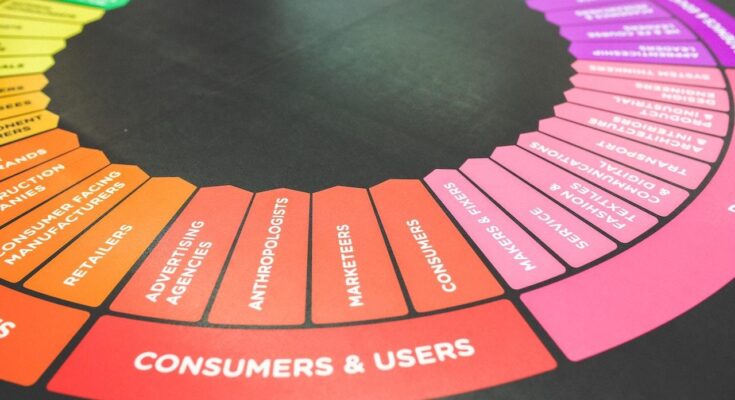In the age of digital business, user experience (UX) has become a critical factor in the success of online marketplaces. A well-designed user interface, combined with a smooth and intuitive user journey, can greatly enhance customer satisfaction, loyalty, and ultimately, marketplace growth. This article will explore the importance of user experience in marketplace design, with focus on five key aspects: ease of use, personalized experience, transparent and clear information, seamless transactions, and responsive customer support.
Ease of Use
A key element of UX in online platform design is ease of use. When it comes to creating a marketplace where buyers and sellers interact, user-friendliness plays a crucial role in attracting and retaining users. A user-friendly and intuitive interface facilitates navigation, product search, and transaction completion, enhancing the overall user experience.
Ease of use also allows users to save time and accomplish tasks more efficiently. Well-thought-out design with clear features and simple instructions reduces the learning curve and eliminates obstacles that can discourage users. This creates a seamless and hassle-free experience, prompting users to return and recommend the platform to others. By investing in a user-friendly experience, marketplaces can differentiate themselves from the competition, gain user trust, and foster long-term growth.
Personalized Experience
Personalization greatly enhances UX in marketplace design. Personalization is key to creating a tailored and engaging journey for each user. By understanding the preferences, behaviors, and needs of individual users, a marketplace can deliver relevant and targeted content, product recommendations, and offers, making the overall experience more meaningful and satisfying.
A personalized experience in a marketplace enhances customer satisfaction and loyalty. When users feel that a platform understands their preferences and provides them with relevant options, they are more likely to engage, make repeat purchases, and become brand advocates. Personalization creates a sense of connection and establishes a relationship between the user and the marketplace, fostering trust and loyalty. By leveraging data and advanced technologies, marketplaces can offer personalized recommendations, personalized search results, and even personalized pricing, resulting in a highly tailored and enjoyable experience for each user.
Transparent and Clear Information
Transparency and clarity of information are vital for a positive user experience. In a marketplace, users rely on accurate and comprehensive information to make informed decisions about products or services. By providing transparent and clear information, a marketplace builds trust with its users, ensuring they have the necessary details to make confident purchasing decisions.
Transparent and clear information fosters a sense of credibility and reliability. When users can easily access information such as product descriptions, specifications, pricing, shipping details, and seller ratings, they feel empowered and informed. This transparency eliminates confusion and uncertainty, allowing users to evaluate options and choose the best fit for their needs. Additionally, clear information helps users understand the terms and conditions, return policies, and any potential fees or charges associated with their transactions. By prioritizing transparent and clear information, marketplaces demonstrate their commitment to customer satisfaction and build a positive reputation in the market.
Seamless Transactions
A seamless transaction process is another critical component of UX in marketplace design. A smooth and hassle-free transaction process is crucial for creating a positive user experience and fostering trust between buyers and sellers. When users can effortlessly complete their transactions, they are more likely to return to the marketplace and engage in future transactions.
Seamless transactions enhance user satisfaction and reduce friction points in the purchasing journey. A well-designed marketplace should offer secure and convenient payment options, streamlined checkout processes, and clear instructions throughout the transaction flow. By minimizing unnecessary steps and providing real-time updates on the status of the transaction, users feel confident and in control of their purchases. Additionally, an efficient transaction process that addresses any potential issues or concerns promptly helps users have a positive perception of the marketplace and encourages them to recommend it to others.
By prioritizing seamless transactions, marketplaces can differentiate themselves from competitors and establish a reputation for reliability and efficiency. It also creates a foundation for building long-term relationships with users, as they are more likely to become repeat customers and loyal advocates for the marketplace. Therefore, investing in a seamless transaction experience is crucial for marketplace design to drive customer satisfaction and business growth.
Responsive Customer Support
Finally, customer support plays a vital role in addressing user concerns, resolving issues, and providing assistance throughout the buyer’s journey. When users encounter problems or have questions, responsive and helpful customer support can make a significant difference in their overall satisfaction and perception of the marketplace.
Responsive customer support creates a sense of trust and reliability. Promptly addressing user inquiries, concerns, or complaints demonstrates that the marketplace values its users and their experiences. Whether it’s through live chat, email, or phone support, providing accessible and responsive channels for communication ensures that users feel supported and heard. Effective customer support also helps in resolving any disputes or conflicts that may arise between buyers and sellers, contributing to a fair and trustworthy marketplace environment. By prioritizing responsive customer support, marketplaces can build strong relationships with their users, enhance their reputation, and encourage repeat business and positive word-of-mouth recommendations.
Additionally, responsive customer support allows marketplaces to gather valuable feedback and insights from users. By actively listening to users’ suggestions and addressing their concerns, marketplaces can continuously improve their services and offerings. This iterative approach to customer support helps in building a user-centric marketplace that evolves to meet the changing needs and expectations of its users.
Conclusion
In conclusion, user experience is a cornerstone of successful marketplace design. By ensuring ease of use, delivering personalized experiences, providing transparent and clear information, facilitating seamless transactions, and offering responsive customer support, marketplaces can significantly enhance their user experience. This not only satisfies and retains current users but also attracts new ones, driving growth and success in the competitive online marketplace landscape.




